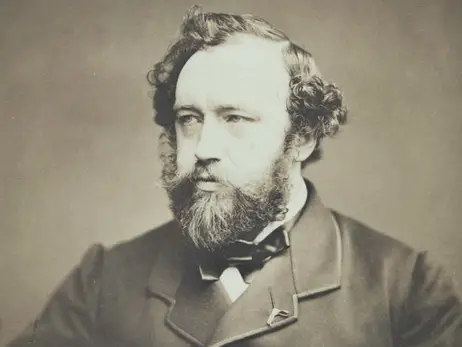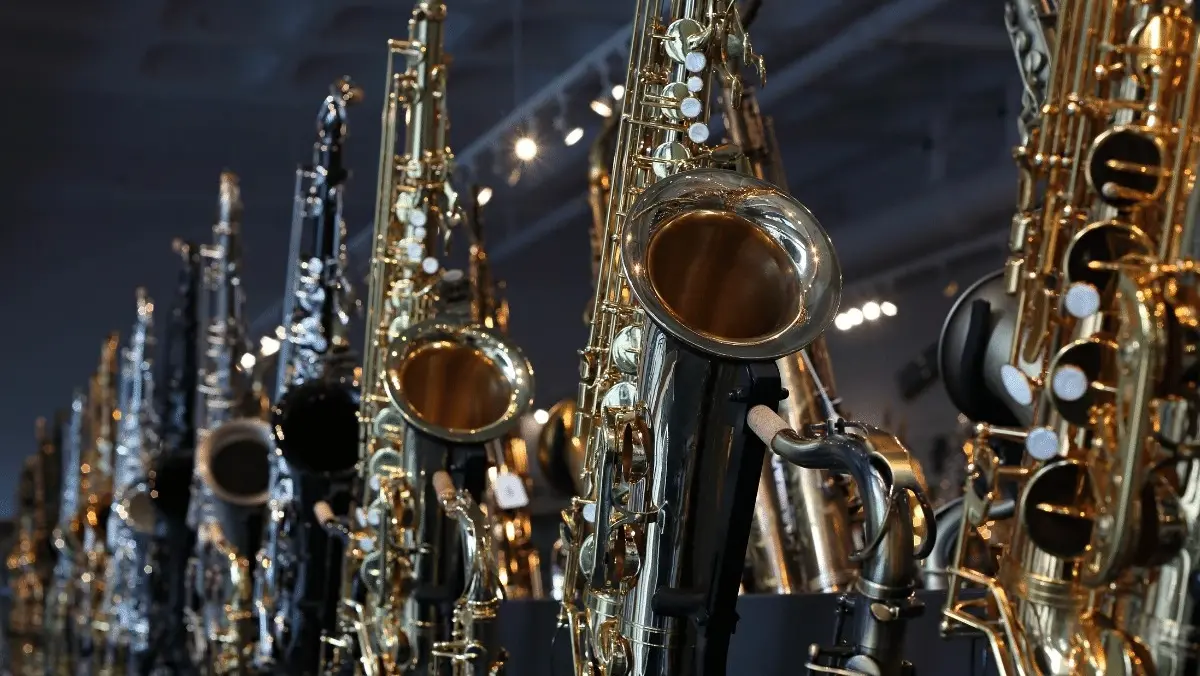Monik is a passionate music teacher based on Salt Spring Island, offering in-studio and online lessons in clarinet and saxophone to students from the age of 8 to adults. With a Master's degree in music from McGill University, Monik specializes in both jazz and classical saxophone, bringing a wealth of experience and a broad range of musical expertise to her teaching. She believes in connecting with music in unique ways and helping students find their own musical voice through a blend of warm-ups, technique, and creative expression. Monik's teaching studio is a nurturing environment for budding musicians.
Early Origins
The Vedas, which in the Hindu faith are believed to have always existed, are the basic texts of the religion and were committed to writing in 1500–1200 BCE. The texts contain what is considered to be fundamental knowledge for all of existence and it is stated in the texts that the use of brass metal can attract positiveness and abundance in life. It is also said that including the use of sounds of brass in prayers can help to invoke divine consciousness. Not only can brass aid in bringing us to a higher state of consciousness, but it has bactericidal properties that have been studied for centuries. Studies confirm the antimicrobial effect of brass, even against antibiotic-resistant bacteria, and depending on the type and concentration of pathogens brass can kill microorganisms within a few minutes to a few hours of contact.
The saxophone is mainly a brass instrument which is lacquered to prevent the brass from oxidizing. There are saxophones made of silver, plastic, and other materials, but mainly we have brass contraptions. It is an interesting and mysterious metal, and I am fond of it and prefer it to other materials.
The first known metal trumpets can be traced back to around 1500 BCE. Silver and bronze trumpets were discovered in the grave of King Tut in Egypt, and other ancient versions of the instrument were found in China, South America, Scandinavia, and Asia. Brass was also used for percussion instruments such as gongs in Asia and the earliest mention is found in sixth century Chinese records, which mentioned the instrument to have come from a country between Tibet and Burma.
One distinguishing feature of the saxophone is that although it is made of brass the sound is produced by a single reed, much like a clarinet. Instruments of this kind can be traced back to approximately 2700 BCE in Egypt, where they were originally called 'memet'. During the Old Kingdom in Egypt (2778-2723 BCE), memets were depicted on the reliefs of seven tombs at Saqqarra, six tombs at Giza, and the pyramids of Queen Khentkaus. The alboka is kind of clarinet with a double bored pipe, two horns and two cane reeds. It is actually more like two musical instruments in one, or one attached to the other, and was established in Spain in the 13th century.
In use during the baroque period, the chalumeau, like the saxophone, was a single reed instrument with a cylindrical bore. Similar to the tarogato, the chalumeau looked much like a recorder. Both the chalumeau and the clarinet were invented by Johann Denner, an instrument maker from Nurnberg, Germany. The first recorded use of the chalumeau is the year 1687 when the Duke of Romhild-Sachsen requested one be made for his court. The drawback with the chalumeau was that the range was only one and a half octaves, and so the first official clarinet was made around the year 1690 when the chalumeau had a register key and barrel added to it.
Enter the instrument maker and self-proclaimed genius Adolphe Sax…

Adolphe Sax, the man who became responsible for the invention of the saxophone, was severely accident prone. He was born as Antoine-Joseph Sax on November 6, 1814, in Dinant, Belgium to parents who themselves were instrument designers and responsible for several changes to the design of the French horn. Before the age of ten he was hit on the head by a brick, accidentally swallowed a needle, fell from a third story window, fell face-first on a searing skillet, inadvertently drank some sulfuric acid, was poisoned three times by varnish and narrowly escaped drowning in the river. His mother was once quoted as saying, “He’s a child condemned to misfortune; he won’t live,” and his nickname was “Little Sax, the Ghost”.
In 1829 at the age of 15 Sax began his career of instrument making in earnest. In 1830 he submitted 2 highly acclaimed flutes and a clarinet made of ivory at the Brussels Exposition. In 1841 he reportedly traveled to Brussels again to present his first saxophone prototype, but it was kicked by a jealous rival and was badly damaged and not fit for display. Adolphe apprenticed with his father Charles Joseph as an instrument maker and experimented with the bass clarinet and various brass instruments. He developed the saxophone by taking a bass clarinet mouthpiece and putting it on a valved brass instrument called an ophicleide. The first saxophone was a baritone saxophone which was demonstrated at the Paris Industrial Exposition in 1844 and for which Sax won the patent on June 28, 1846.
The following is an excerpt from Adolphe Sax’s 1844 patent submission, French Patent #3226 for the Saxophone Family:
“We know that in general, wind instruments are either too harsh or too weak in sonority; one or the other of these faults is most especially perceptible in the basses. The Ophicleide, for example, which reinforces the trombones, produces a sound so disagreeable that it must be kept out of resonant halls because of its inability to be played softly. The bassoon, to the contrary, has such a weak sound that it can be used only for accompanying and filling parts; yet for specific forte effects in orchestration it is absolutely useless. One should note that the bassoon is the only instrument of this type which blends well with string instruments. Only brass wind instruments produce a satisfying effect in outside performance. Bands comprised of these instruments are the only kind of ensembles which can be used in these circumstances. Everyone knows that for outside performance the effect of stringed instruments is null. Because of the weakness of their timbre, their use is almost impossible under such conditions. Struck by these different drawbacks, I have looked for a means of remedying these situations by creating an instrument, which by the character of its voice can be reconciled with the stringed instruments, but which possesses more force and intensity than the strings. This instrument is the Saxophone. The Saxophone is able to change the volume of its sounds better than any other instrument. I have made it of brass and in the form of a parabolic cone to produce the qualities which were just mentioned and to keep a perfect quality throughout its entire range. The Saxophone embouchure uses a mouthpiece with a single reed whose interior is very wide, and which becomes narrower at the part which is fitted to the body of the instrument.”
Adolphe Sax's Musical Instruments
Consider this article by composer Hector Berlioz, published on June 12, 1842, in the Paris Journal des Débats –
“An abuse of musical instruments is made nowadays; they are employed indiscriminately, with no restraint or competence. Everybody knows the quality of the beautiful effects they can produce, and both the public and the musicians are fatally drawn to seek such effects, and even to demand them from any new production. This art of instrumentation, as it developed, necessarily promoted and improved the construction of instruments. One can appreciate the immense progress achieved if one compares, for instance, the pianos of Erard and Pape, with the harpsichords of the last century; or the flute employed in the days of Devienne with the modern flute of Boehm; or the ancient clarinets with those constructed nowadays by Mr. Adolphe Sax, and the horrible and shapeless "serpent" used in our cathedrals with the magnificent and profound instrument recently invented by this young talented craftsman. String instruments are far from having followed the same trend; none of the violin makers of our time can be compared with the Amati, the Stradivarius of yore, this is inherent in the nature of their craft, that from the beginning attained a high degree of perfection. On the contrary, the making of brass and woodwind instruments had never left its state of infancy, but today it has taken a road that cannot fail to lead it towards splendid achievements.
A revolution is in the making and Monsieur Adolphe Sax from Brussels, whose work we have just examined strongly, contributes to it. A man of lucid mind, far-seeing, tenacious, steadfast and skilled beyond words, he is ever prepared to replace the workers incapable of understanding his projects or realizing them, whatever their specialties. He is a calculator, an acoustician, and when required, a smelter, a turner and, if need be, at the same time an embosser. He can think and act. He invents, and he accomplishes. Before describing his new instrument, let us mention the improvement that he has brought to the group of the clarinets.
By stretching somewhat towards the bell the tube of the soprano clarinet, he added to its compass a semitone in the lower scale so that now that clarinet can play the E flat. In the medium scale, the B flat that had a wrong sound on the ancient clarinet, is one of the best notes of the new one. The trills from B flat to B natural or B flat to C in the medium scale, those from A to B in the lower scale, those from E to F sharp, the arpeggios in octaves from F to F and many other impracticable passages, are from now on easily played and produce an excellent sound effect. It is a well-known fact that the notes of the extreme acute compass were a nightmare for composers and performers, who rarely dared to use them, and then only with great caution. By fixing a small key under the clarinet mouthpiece, Mr. Sax rendered these notes as pure, as soft, and as easy to play as those of the medium. The B flat in alt, that nobody dared to write, can be played with no preparation and with no effort on the part of the performer. It can be played pianissimo without the slightest danger and its sound is as least as soft as the same note on the flute. If for any reason a clarinet were to remain for a few days without being played, or was in use for too long a time, dryness or humidity would render the wooden mouthpiece difficult to use. Mr. Sax, by giving the instrument a gilt mouthpiece that increases the brilliancy of its sound, has done away with these inconveniences. The metallic mouthpiece is not subject to change like the wooden one. The clarinet has a greater compass, is more equal in tone facility and precision than the ancient one; the fingerings remain unchanged, except for a few instances where it has been simplified.
The new bass-clarinet built by Mr. Sax has nothing but the name in common with the old one. In this new instrument, the holes have been abolished and replaced with keys adapted to the points corresponding to the core of the vibrations. The new bass-clarinet has twenty-two keys and is remarkable for its perfect tone accuracy and uniform temperaments in all the degrees of the chromatic scale. Its greater diameter increases the volume of the sound, without preventing or hindering the performance of octaves and fifths. This advantage is due to a key drilled near the instrument's mouthpiece. Its compass is three octaves and a sixth. But there is something more important than this huge extension, for it is obvious that the bass clarinet is not supposed to range among the upper register of the orchestra. It is for the beauty of its lower notes that we appreciate it so much. As the tube is a very long one, when the performer stands, the bell of the instrument is very close to the ground. Hence a very unpleasant dulling of the sound would have existed, had not the skilled craftsman prevented it by adding a concave metallic reflector fixed under the bell, that not only prevents the sound from being lost, but directs it in the proper direction, increasing its volume at the same time. The Saxophone (Le Saxophon), named after its inventor, is a brass instrument with nineteen keys, whose shape is rather similar to that of the ophicleide. Its mouthpiece, unlike those of most brass instruments, is similar to the mouthpiece of the bass clarinet.
Thus, the Saxophone becomes the head of a new group, that of the brass instruments with reed. It has a compass of three octaves beginning from the lower B flat under the staff (bass clef); its fingering is akin to that of the flute or the second part of the clarinet. Its sound is of such rare quality that, to my knowledge, there is not a bass instrument in use nowadays that could be compared to the Saxophone. It is full, soft, vibrating, extremely powerful, and easy to lower in intensity. As far as I am concerned, I find it very superior to the lower tones of the ophicleide, in accuracy as well as in the solidity of the sound. But the character of such sound is absolutely new, and does not resemble any of the timbres heard up till now in our orchestras with the sole exception of the bass clarinet's lower E and F. Owing to its reed, it can increase or diminish the intensity of its sounds. The notes of the higher compass vibrate so intensively that they may be applied with success to melodic expression. Naturally, this instrument will never be suitable for rapid passages, for complicated arpeggios; but the bass instruments are not destined to execute light evolutions. Instead of complaining, we must rejoice that it is impossible to misuse the saxophone and thus to destroy its majestic nature by forcing it to render mere musical futilities.
The composers will be very indebted to Mr. Sax when his new instruments are generally employed. If he perseveres, he will meet with the support of all friends of music.” - Hector Berlioz
Along with his father, Charles Joseph Sax, Adolphe Sax evolved several instruments in addition to the saxophone: the saxhorn (patented 1845), a development on the bugle horn; the saxo-tromba, producing a tone between that of the bugle and the trumpet; and the saxtuba. He discovered that the proportions given to a column of air vibrating in a sonorous tube, and these alone, determine the timbre produced and not the material the tube is made of. In 1857 Sax was appointed instructor of the saxophone at the Paris Conservatory. Later he improved several instruments and invented others without, however, establishing a basis for their commercial exploitation such as the bass clarinet. Many of his instruments were accepted by French army bands, and for 10 years Sax was involved in lawsuits with competing instrument makers seeking to have his patents revoked. At one point in his career when his rivals were bribing his employees for secrets, Sax set up a workshop at the local penitentiary.
Adolphe Sax held the patent for the saxophone family until 1866. Between 1866 and 1881 (when he regained the patent) several other instrument makers, including his nemesis and rival Pierre Louis Gautrot (who was involved in the 1845 legal suit against Adolphe Sax) patented modifications on saxophone mechanisms. And so, Sax made fortunes and lost them: he went bankrupt three times fighting lawsuits brought by his rivals. In addition to the saxophone family, Adolphe Sax patented 45 other inventions including a modification on a train whistle and a monstrous agent of destruction called the “saxocannon”. This was a giant mortar bullet, eleven yards wide and weighing 550 tons, that could level an entire city. He was bankrupted by litigations against him for his inventions, bailed out by Napoleon III several times and died penniless at the age of 79.



